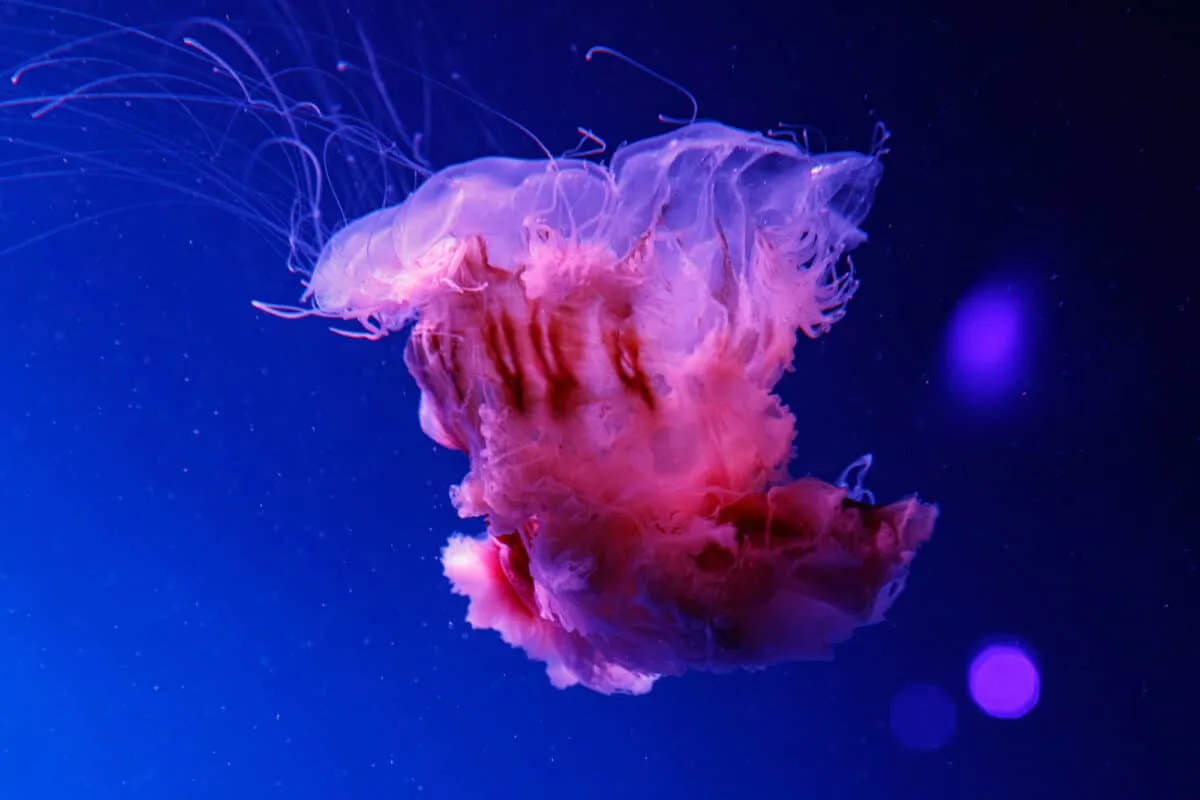Jellyfish are an incredible feature of marine life that has existed on this planet for millions of years. They are found in every ocean on Earth and come in various shapes and sizes. In recent news, the biggest swarm of Jellyfish ever recorded has been unveiled, causing a stir among marine biologists and ocean enthusiasts.
While Jellyfish are often viewed as harmless creatures that drift with ocean currents, they can significantly impact the marine ecosystem and human activities. Here, this article will attempt to explore and awe you with the world of Jellyfish, with a particular focus on the Lion’s Mane Jellyfish.
Join us to discover Jellyfish’s mysterious and intriguing world and learn about their significance in the marine ecosystem and our daily lives.
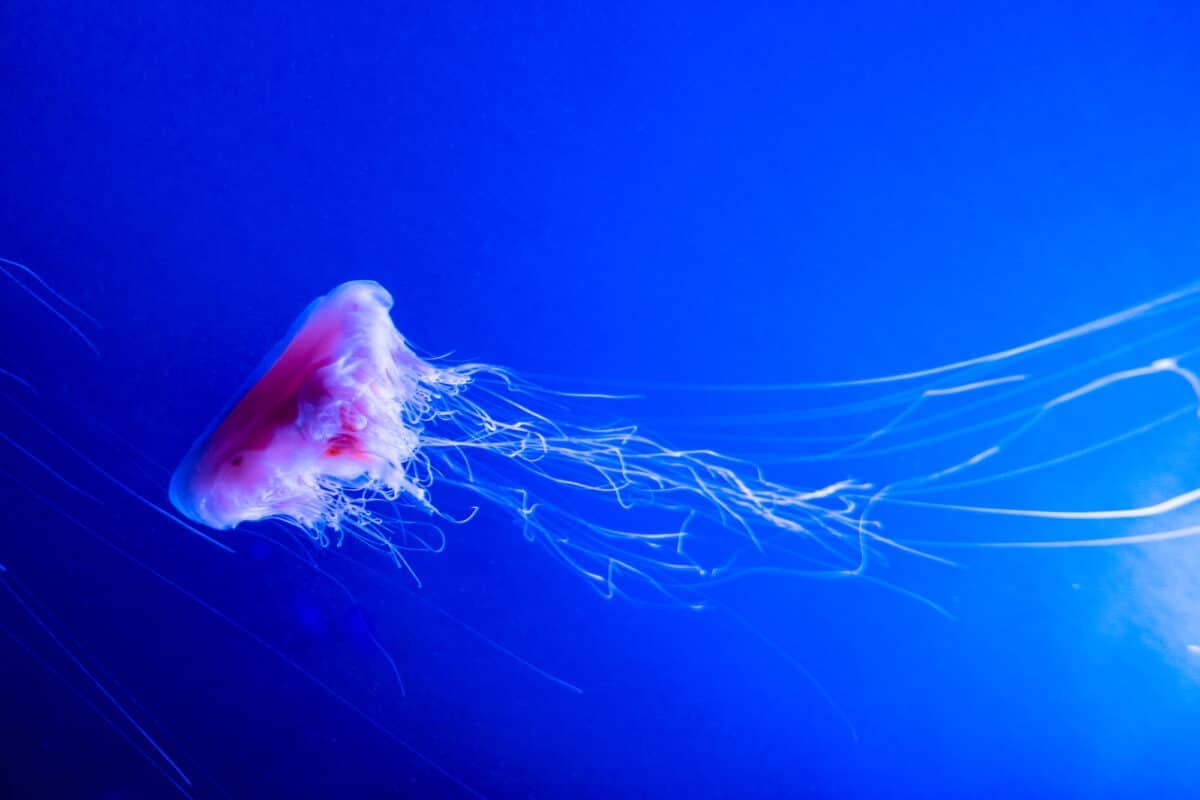
Skip ahead to any section below.
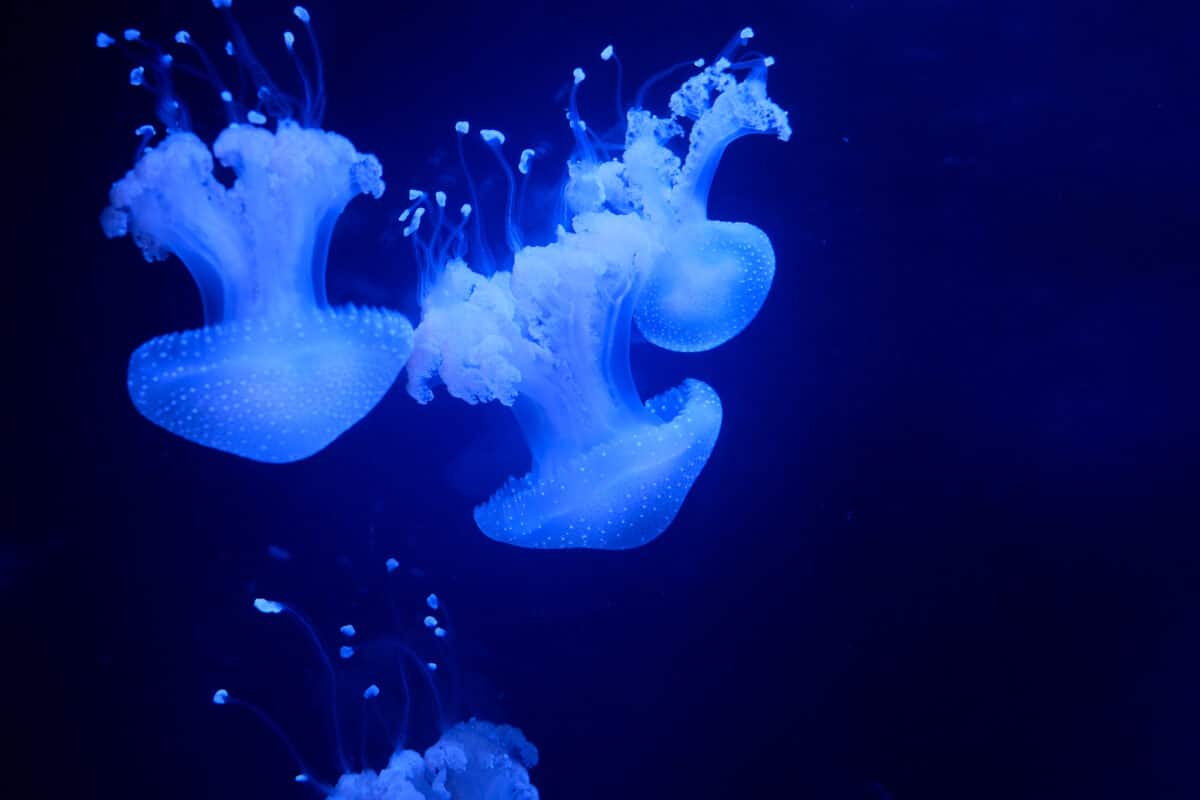
Key Points
| 1. Jellyfish blooms and swarms can have a significant impact on human health, the environment, and the economy. | |
| 2. The lion’s mane jellyfish is the largest jellyfish species and can have a potent sting. | |
| 3. Jellyfish play a crucial role in the marine food chain and ecosystem. | |
| 4. Jellyfish conservation efforts are necessary to protect their populations and promote sustainability in the oceans. | |
| 5. Educating the public about jellyfish and their importance is essential. |
The World’s 9 Largest Jellyfish:
Nomura’s Jellyfish
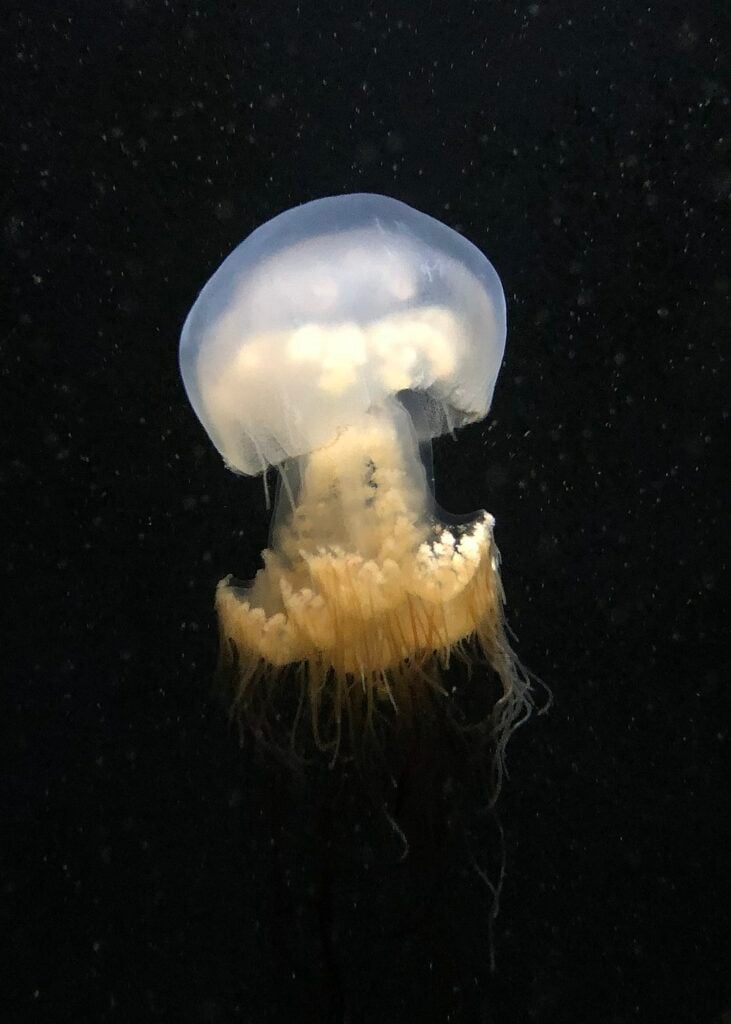
Nomura’s Jellyfish is the largest jellyfish species in the world, with a bell diameter that can reach up to 2 meters and a weight of up to 200 kilograms. These giant Jellyfish are found in the Yellow and East China Seas, feeding on small fish and plankton.
Lion’s Mane Jellyfish
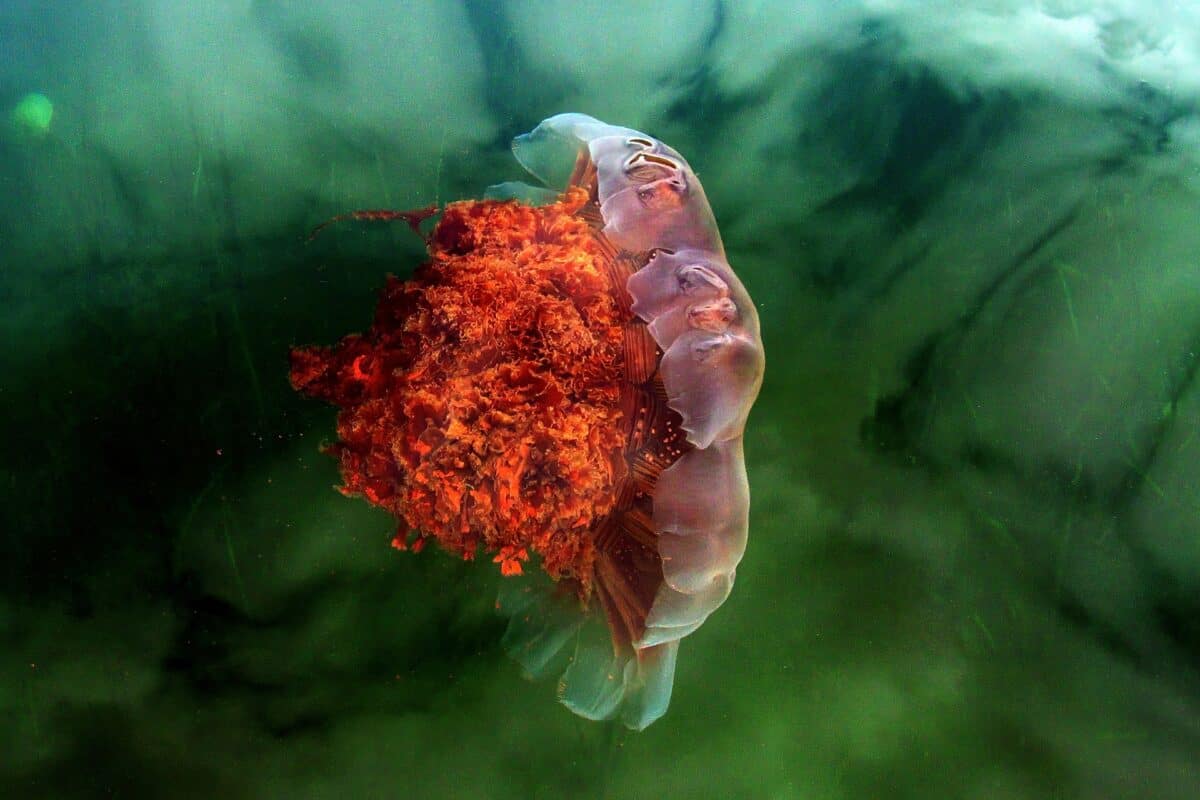
The Lion’s Mane Jellyfish is another giant jellyfish species that can reach impressive sizes. These Jellyfish have a distinctive bell-shaped body with long, hair-like tentacles that can stretch up to 120 feet. They are typically found in cold waters, such as the Arctic and the Atlantic, not to mention the North Pacific.
Arctic Lion’s Mane Jellyfish
The Arctic Lion’s Mane Jellyfish is a subspecies of the Lion’s Mane Jellyfish found in the Arctic Ocean. They resemble the Lion’s Mane Jellyfish but can have a bell diameter of up to 2 meters and tentacles stretching up to 36 meters in length.
Stygiomedusa Gigantea

The Stygiomedusa Gigantea, also known as the Giant Starry Octopus Jellyfish, is a rare and elusive species that can reach up to 6 feet long. These Jellyfish are found in the deep waters of Mexico (the Gulf) and the Caribbean.
Cannonball Jellyfish
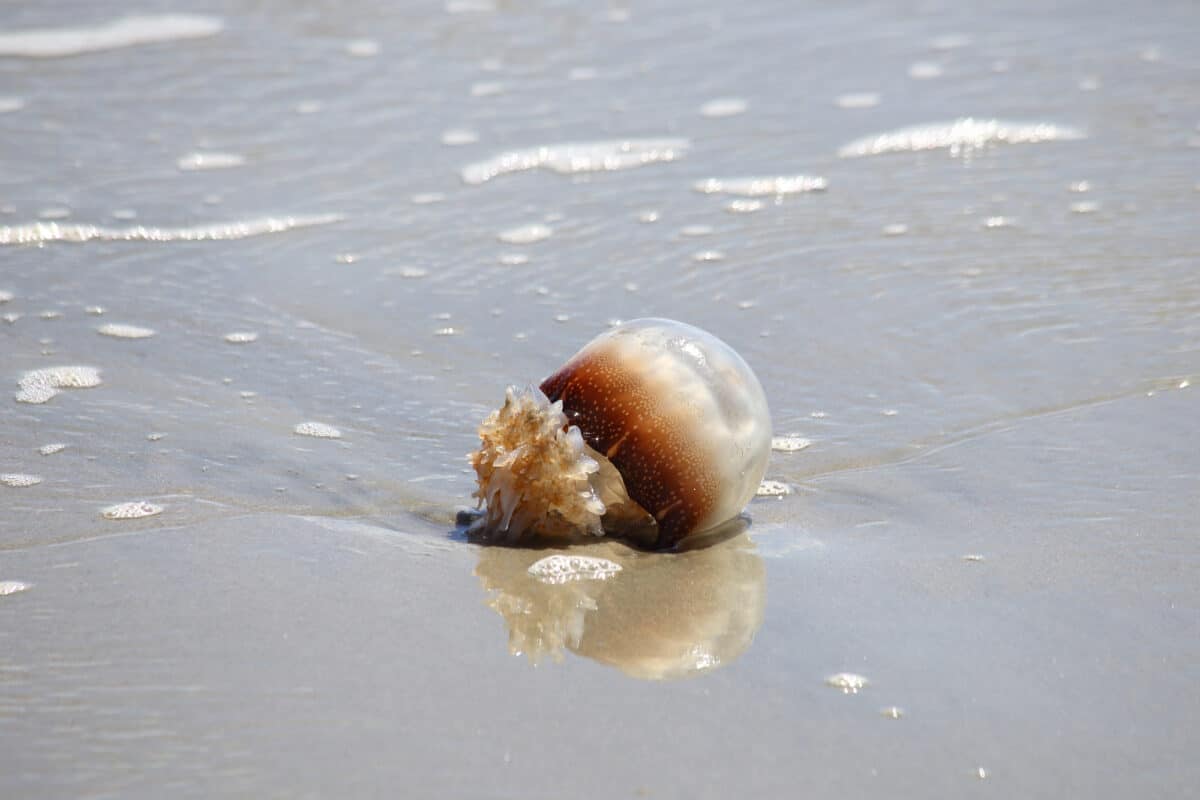
The Cannonball Jellyfish is a jellyfish species commonly located in warmer locations and seas such as Pacificfic and Indian Oceans. They have a distinctive round shape and can reach up to 10 inches in diameter.
Portuguese Man o’ War
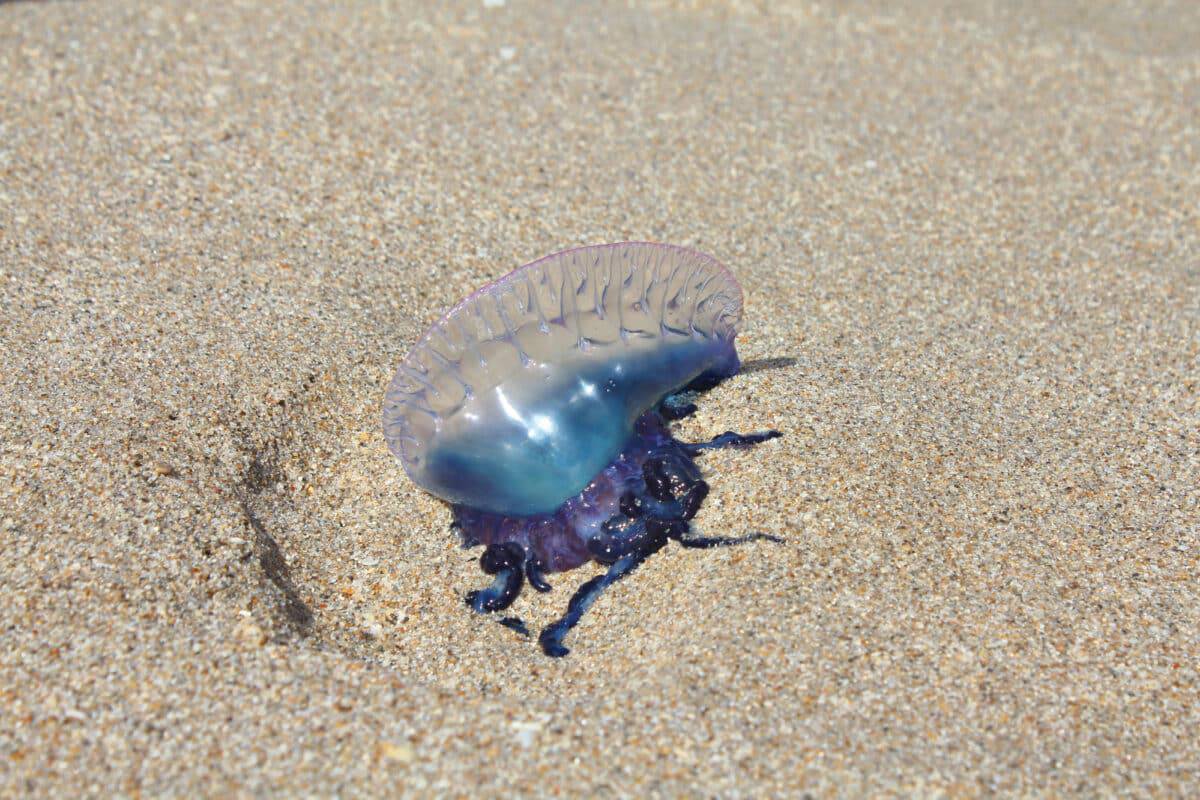
The Portuguese Man o’ War is not a true jellyfish but is often mistaken for one due to their similar appearance. They have a distinctive blue or purple gas-filled float reaching up to 12 inches and long tentacles stretching up to 100 feet.
Sea Nettle
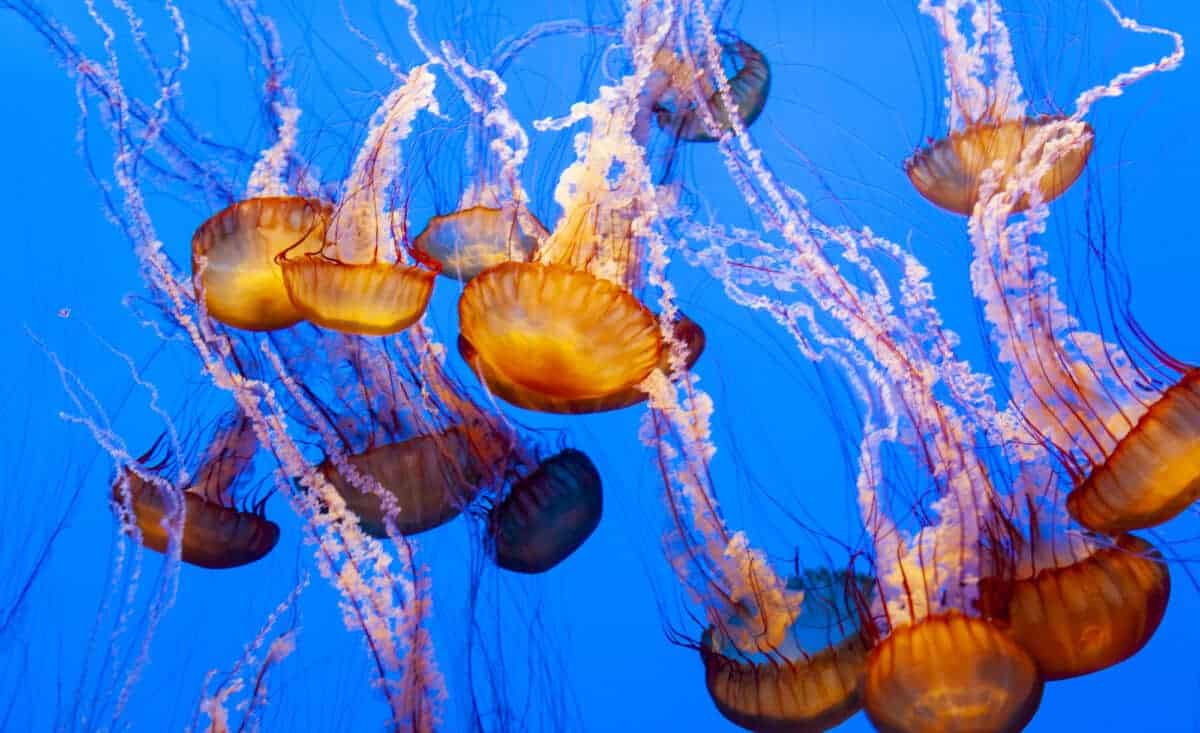
The Sea Nettle is a jellyfish species commonly found in the Atlantic and Pacific Oceans waters. They have distinctive bell-shaped bodies with long, flowing tentacles that reach up to 8 feet long.
Box Jellyfish
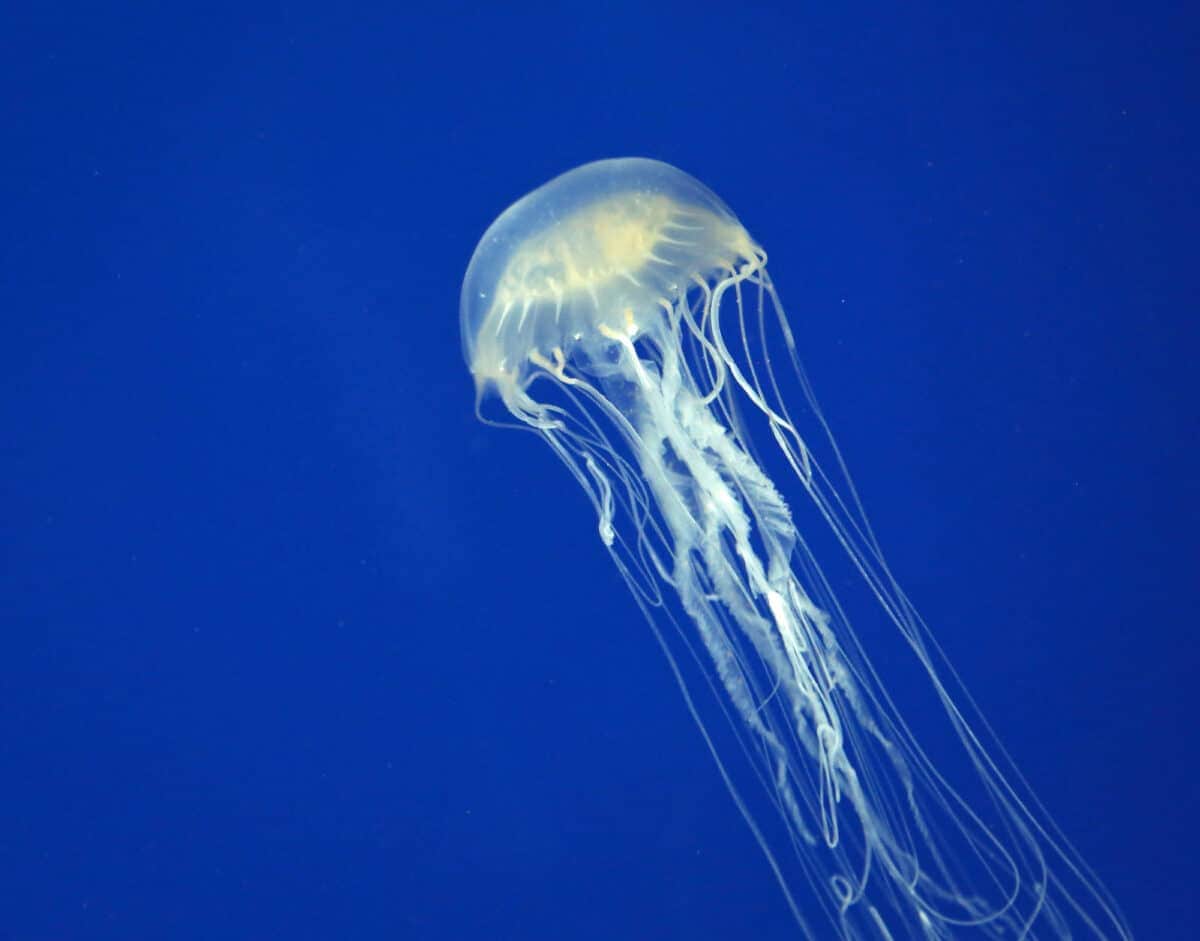
This is one of the most venomous species in the world. They have a box-shaped bell and long tentacles that deliver a powerful sting. They are commonly found in the waters of the Pacific and Indian Oceans.
Jellyfish can have a significant impact on the marine ecosystem and human activities. They can cause damage to fishing gear, clog power plant intakes, and impact the tourism industry. To learn more about the impact of Jellyfish on the environment, check out Oceana’s website on marine life conservation.
Stay tuned for the next section to unveil the biggest swarm of Jellyfish ever recorded.
Check out Explore Pennsylvania’s Coyote Population.
Unveiling the Biggest Swarm of Jellyfish Ever Recorded:
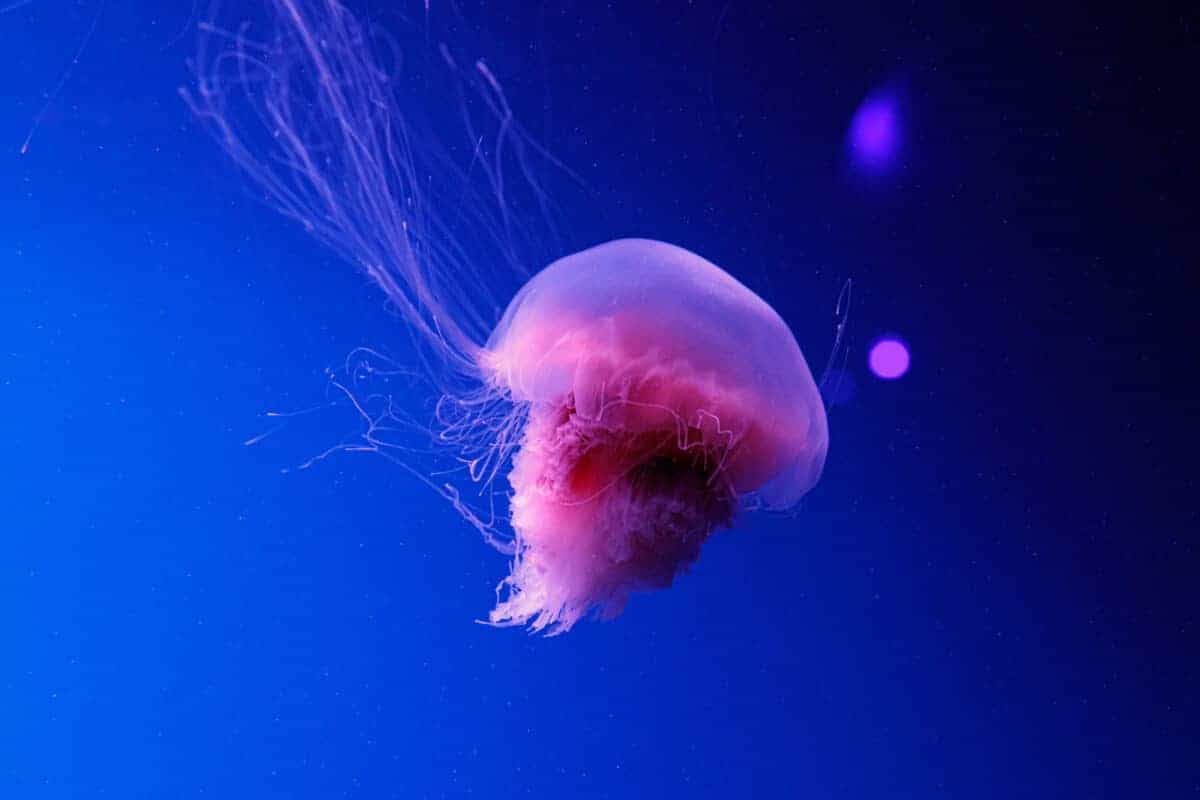
Jellyfish swarms, or blooms, occur when large numbers gather in one area. These blooms can significantly impact the marine ecosystem, disrupting food chains and leading to the collapse of fish populations. Recently, a swarm of Jellyfish was recorded off the coast of Scotland, and it was the biggest swarm of Jellyfish ever recorded.
The swarm consisted of hundreds of thousands of Lion’s Mane Jellyfish, known for their size and distinctive reddish-brown color. These Jellyfish can grow over six feet in diameter, with tentacles stretching up to 100 feet long. While Lion’s Mane Jellyfish is not uncommon in the waters around Scotland, the size of this swarm was unprecedented.
Also, the jellyfish bloom was recorded by a marine conservation group studying climate change’s impact on marine ecosystems. The group believes the unusually warm weather in the area may have contributed to the swarm, as Jellyfish thrive in warm water. However, the exact cause of the bloom is still unknown, and scientists continue to study the phenomenon.
The jellyfish swarm has caused concern among fishermen and other marine industry workers, as Jellyfish can damage fishing gear and disrupt fishing operations. It has also raised questions about the impact of climate change on the ocean’s ecosystems and the need for measures to protect and conserve marine life.
To learn more about the impact of Jellyfish on the marine ecosystem and how you can help protect marine life, visit Oceana’s website today.
What is a Lion’s Mane Jellyfish?
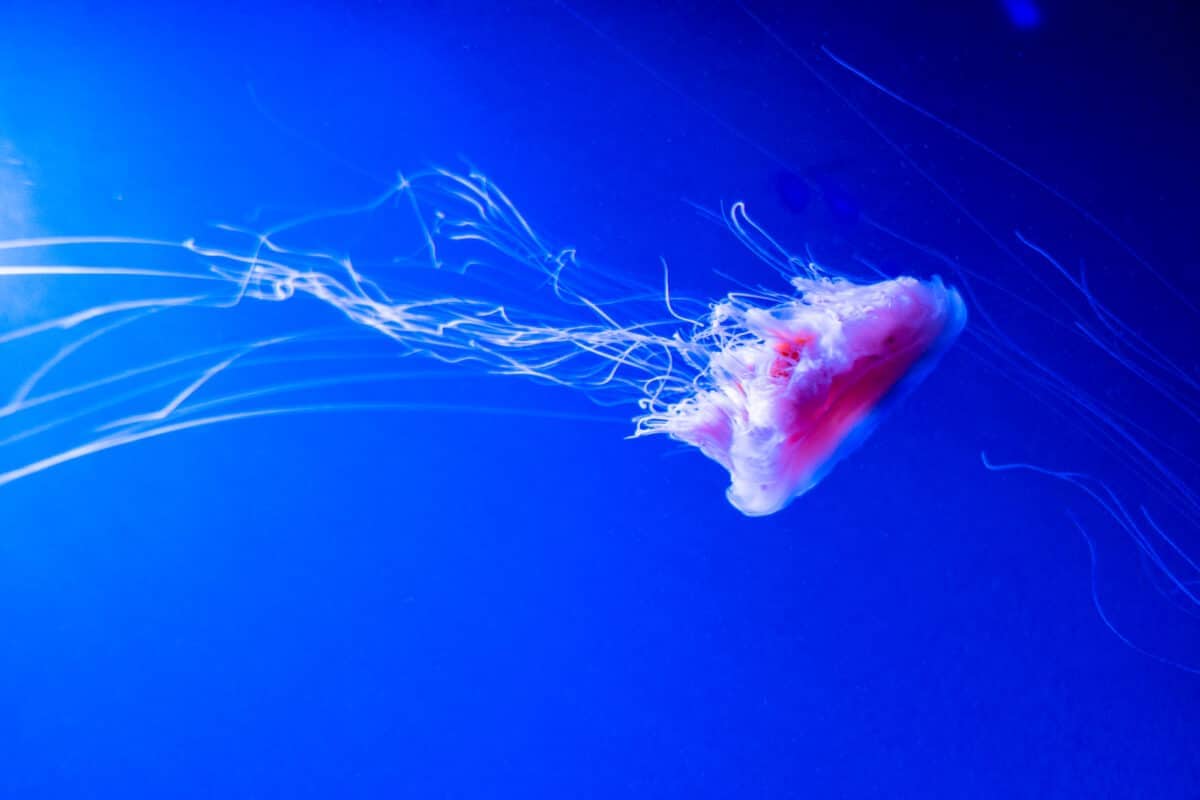
Lion’s mane jellyfish are one of the largest species of Jellyfish in the world. This section will explore these fascinating creatures’ physical characteristics, habitat, and behavior.
Physical Characteristics:
Lion’s mane jellyfish, also known as Cyanea Capillata, can grow up to 120 feet long, making them one of the largest jellyfish species in the world. They have a distinct bell-shaped body divided into eight lobes, and their tentacles can extend up to 120 feet. These tentacles are covered in thousands of tiny stinging cells called nematocysts, ultimately used to catch their prey.
Habitat:
Lion’s mane jellyfish are found in the northern Pacific, Atlantic Oceans and the Arctic Ocean. They are commonly found in colder waters but have also been known to inhabit warmer waters. These Jellyfish are often found in deep water but can sometimes be seen near the surface.
Behavior:
Lion’s mane jellyfish are carnivorous and feed on small fish, plankton, and other Jellyfish. They use their long tentacles to capture their prey and bring it toward their mouth. These Jellyfish are not strong swimmers and often rely on ocean currents to move around. Only large groups or swarms of Jellyfish tend to migrate, which can significantly impact the marine ecosystem.
To learn more about lion’s mane jellyfish and their conservation, visit Oceana’s website.
How Jellyfish Swarms Affect Humans:
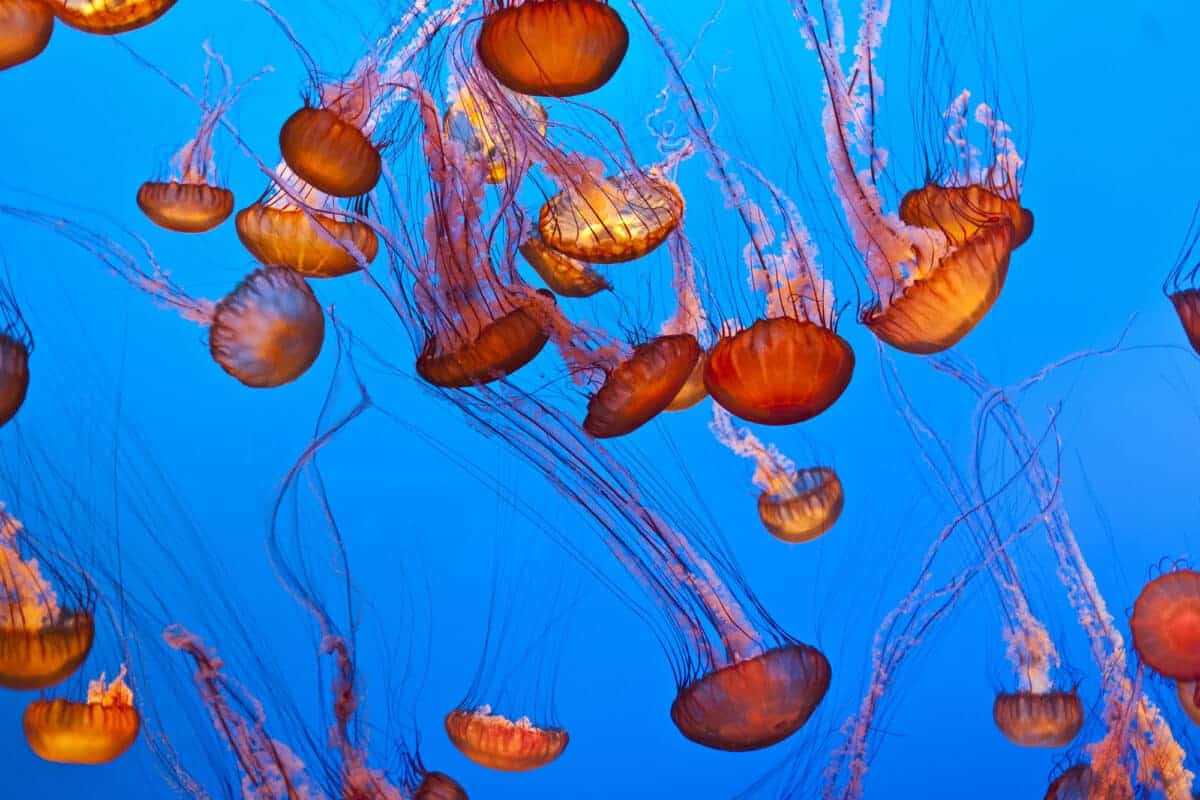
Jellyfish blooms can significantly impact human activities, ranging from tourism to fishing and aquaculture. This section will also examine how jellyfish swarms affect humans and explore measures to mitigate their impact.
However, Jellyfish blooms can harm human activities in several ways. Firstly, Jellyfish can damage fishing gear, resulting in significant economic losses for fishermen. Secondly, Jellyfish can cause power outages by clogging power plant intakes. In some cases, the impact of jellyfish blooms can be severe enough to shut down entire power plants, causing widespread disruption.
Also, Jellyfish blooms can affect tourism, making beaches unattractive and even dangerous. Therefore, swarms of Jellyfish can discourage tourists from visiting certain areas, resulting in lost revenue for local businesses. Moreover, jellyfish stings can pose a risk to swimmers and water sports enthusiasts, causing pain, itching, and in rare cases, serious health issues.
Despite the potential impact of jellyfish blooms, some measures can be taken to mitigate their effects. For example, some fishing gear manufacturers have developed jellyfish-resistant nets to reduce damage to equipment. Additionally, researchers are exploring ways to predict and prevent jellyfish blooms by monitoring ocean conditions and using techniques such as ultrasound and chemical treatments.
To learn more about Jellyfish and other marine creatures, visit A-Z Animals for more information on marine life conservation.
The Bottom Line
In this article, we have explored the world’s largest Jellyfish and unveiled the biggest swarm of Jellyfish ever recorded. We have also examined the lion’s mane jellyfish, including its physical characteristics, habitat, behavior, and more.
Jellyfish are a crucial part of the marine ecosystem, and it is essential to understand and protect them. Their blooms and swarms can significantly impact human health, the environment, and the economy. Therefore, promoting jellyfish conservation efforts and educating the public about these fascinating creatures is essential.
The lion’s mane is one of the most remarkable species, with its impressive size, unique appearance, and potent sting. While it can be dangerous to humans, it is also an essential part of the marine food chain and plays a critical role in the ecosystem.
In conclusion, we must continue to learn about and appreciate the fascinating world of Jellyfish while also taking steps to protect their populations. In addition, by working together to promote jellyfish conservation, we can help ensure the health and sustainability of our oceans for generations to come. Furthermore, to gain more information on jellyfish conservation and ways to get involved, visit Oceana’s website.
Thanks for reading along! If you enjoyed this article, check out these related articles: The Venomous Box Jellyfish Sting, Deadly Beauties: The World’s Most Lethal Jellyfish, and Treating a Stonefish Bite.
Join our Forum for free today!

- Huge Pet Bison Breaks Into House - July 22, 2024
- Giant Black Bear Surprises Beachgoers by Emerging from the Ocean in Florida - July 22, 2024
- Brave Man Plays Instrument While Huge Bear Caresses His Shoulder - July 22, 2024

